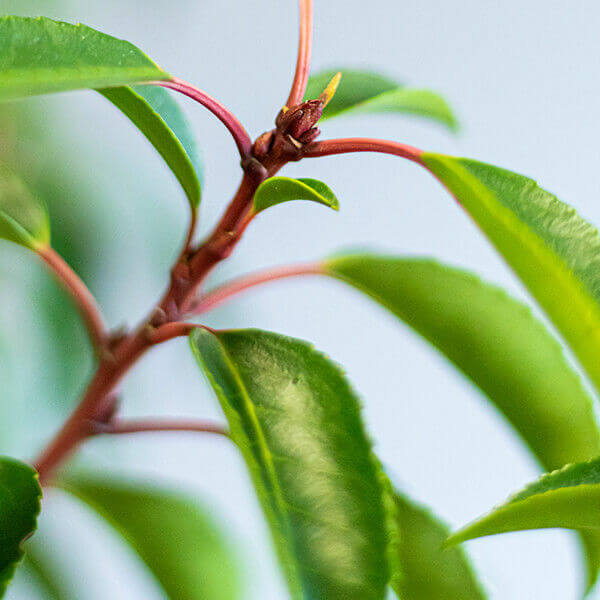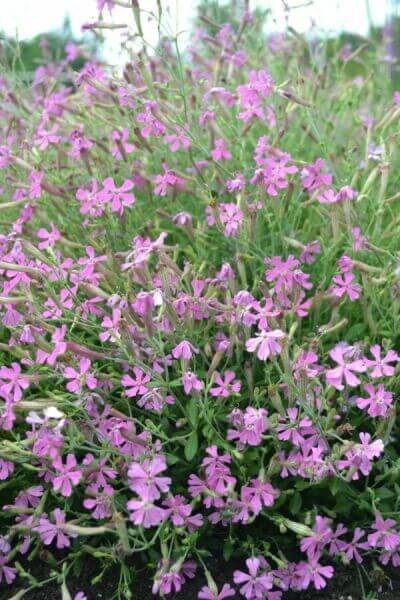Hedge Plants For Garden Design
Hedge Plants For Garden Design
Blog Article
Best Hedging Plants For Diverse Climates
Enhance your garden's appeal with lush hedge varieties such as Yew (Taxus), Thuja, Laurel, Photinia, and Bamboo, celebrated for their structural stability and environmental advantages.
Yew and Thuja provide evergreen protection and winter strength, while Laurel uses rapid development and broad, fragrant leaves.
Photinia adds seasonal appeal with its vibrant red foliage, and Bamboo provides a low-maintenance, peaceful atmosphere.
These hedges enhance air quality, reduce sound, and develop tranquil, personal areas.
Proper planting, spacing, and upkeep make sure vigorous growth and eco-friendly consistency.
Explore how these rich ranges can raise your garden's appeal and well-being.
Key Takeaways
Transform Your Garden With Lush Hedge Ranges
- Select Yew for its thick, evergreen development and unparalleled longevity.
- Select Laurel for its quick development and broad leaves, ensuring quick privacy.
- Select Photinia for its dynamic seasonal foliage, which turns a striking dark red.
- Use Bamboo for a low-maintenance, winter-hardy hedge with visual appeal.
- Area plants 2-3 per meter and prune regularly for ideal growth and health.
Popular Hedge Plants
When transforming a garden with rich hedge varieties, it's vital to think about popular hedge plants such as Yew, Thuja, Laurel, and Photinia due to their special attributes and advantages.
Yew (Taxus) is extremely respected for its longevity and dense, green growth, making it a prime choice for enduring landscapes.
Thuja is noted for its evergreen foliage and robust winter strength.
Photinia includes seasonal vibrancy with red leaves that darken over time, creating dynamic visual appeal.
Laurel provides rapid growth and fragrant, broad leaves, ideal for quick privacy.
In Addition, Bamboo is an exceptional option for atmosphere, providing a low-maintenance, winter-hardy option that improves the garden's visual with its sophisticated, swaying canes.
These selections accommodate a range of horticultural requirements and choices.
Benefits of Garden Hedges
Garden hedges offer a wide range of benefits, making them an important addition to any landscape. These natural barriers are affordable to execute and supply substantial wind security, enhancing air blood circulation and adding to noise decrease. The thick foliage of hedges like Thuja and Beech ensures personal privacy by obstructing presence, producing a serene and remote environment.
Hedges likewise play an essential function in microclimate policy, supplying a stable environment that fosters plant development and lessens temperature variations. Their complex leaf structures filter contaminants, enhancing air quality and contributing to a much healthier garden community.
Additionally, hedges master sound reduction, soaking up and deflecting sound waves to lower ambient noise levels. This double functionality of offering both visual and acoustic personal privacy improves the total tranquility and aesthetic appeal of any garden.
Planting and Maintenance Tips
For an effective hedge, meticulous preparation of the planting location is vital. Guarantee the soil has correct pH and drain to support strong root advancement.
Area the plants appropriately for the picked types. Water the hedge frequently throughout its preliminary growth stage, changing as required with seasonal changes.
Implement a organized bug control and illness avoidance method, using chemical or organic treatments when necessary. Routinely inspect for aphids, termites, and fungal infections.
Apply mulch to keep wetness and reduce weeds. Seasonal pruning promotes thick growth and air blood circulation, necessary for plant health.
Following these guidelines will help you cultivate a lively, properly maintained hedge that enhances the beauty of your garden.
Spacing and Cutting Standards
Spacing and Trimming Standards
Appropriate spacing and cutting are crucial for cultivating healthy, aesthetically appealing hedges. Adequate spacing ensures each plant receives adequate nutrients, light, and air flow.
Follow these guidelines for ideal hedge upkeep:
- Spacing: Position hedge plants 2-3 plants per meter to encourage robust growth.
- Pruning Strategies: Regular pruning is important for keeping wanted hedge height and shape. Trim brand-new development in summertime and cut back older wood throughout winter season.
- Seasonal Care: Adjust trimming schedules and methods according to seasonal requirements to guarantee plant health.
- Hedge Height: Routinely screen and trim to maintain the desired hedge height and achieve uniform looks.
Adhering to these steps will ensure your hedge flourishes, improving both the appeal and functionality of your garden.
Picking the Right Hedge
Picking the Right Hedge
Selecting the proper hedge includes evaluating factors such as fully grown height, foliage density, and environmental strength. Successful hedge plant selection requires understanding each species' growth qualities and site-specific flexibility.
For example, Yew (Taxus) uses excellent longevity and dense development, while Thuja is notable for its get more info winter strength. Furthermore, thinking about upkeep requirements is crucial; fast-growing species like Laurel or Privet need regular cutting, whereas low-maintenance options like Bamboo or Ivy might be more suitable for those seeking very little upkeep.
Environmental factors such as soil type, light availability, and wetness conditions need to also assist the selection process. This careful approach makes sure the picked hedges will thrive, supplying both aesthetic and functional benefits to the garden landscape.
Delivery and Planting Suggestions
To guarantee your hedge plants thrive, they should be provided by specialized couriers and planted quickly upon arrival.
Follow these vital actions for effective planting:
- Soil Preparation: Improve the soil with raw material to enhance drainage and nutrient material.
- Planting Depth: Create a trench twice the width and equal to the depth of the root ball.
- Watering Strategies: Water thoroughly after planting, keeping the soil regularly wet however not filled.
- Mulching: Use a layer of mulch to keep moisture and reduce weeds.
Consumer Assistance and Service
Provided the crucial function of prompt support in horticultural pursuits, our customer assistance group is offered six days a week through telephone, e-mail, and social networks to provide expert advice and promptly attend to any concerns. Their devotion to fast action times makes sure client complete satisfaction by resolving questions associated with plant health, ideal planting techniques, and upkeep schedules.

Action Time
-------------------
6 days a week
6 days a week
This extensive assistance system, reinforced by an excellent 9.3/ 10 consumer score, highlights our dedication to improving the gardening experience for each customer.
Often Asked Concerns
For How Long Does It Take for Hedge Plants to Develop?
Hedge plants normally require one to 3 years to become completely developed, with the exact period differing by species and growing conditions.
Efficient care throughout this critical period is vital for robust development. Consistent watering, vigilant weed control, and suitable fertilizer application are pivotal in promoting strong root advancement.
For example, fast-growing species like Laurel might develop faster, while slower-growing varieties such as Yew may take longer. Thorough upkeep speeds up the establishment process, resulting in healthy and dense hedges.
What Are the very best Hedge Plants for Personal Privacy?
The concern of the very best hedge plants for personal privacy includes examining evergreen and deciduous options.
Evergreen hedges like Thuja, Laurel, and Cypress provide year-round coverage, ensuring continuous privacy.
In contrast, deciduous hedges such as Beech offer seasonal privacy, shedding leaves in colder months.
Key upkeep tips for personal privacy hedges consist of routine cutting, fertilizing in spring, and appropriate spacing-- generally 2 to 3 plants per meter.
Furthermore, consistent watering and diligent weed removal are vital for promoting healthy, thick growth.
Can Hedge Plants Bring In Wildlife to My Garden?
Yes, hedge plants can bring in wildlife to your garden by supplying necessary advantages like shelter, food, and nesting sites, therefore improving regional biodiversity. Yew, holly, and laurel are outstanding for drawing in birds, while ivy supports a range of pests.
However, it is necessary to note that there are some downsides, such as increased maintenance to manage bugs and regular maintenance. Carefully selecting and keeping hedge ranges can help balance these drawbacks and advantages, ultimately cultivating a dynamic and sustainable environment in your garden.
Are There Any Blooming Hedge Plants Available?
Yes, there are flowering hedge plants available that can boost the beauty of your garden.
For instance, Elaeagnus, also referred to as Olive Willow, produces fragrant white flowers in the fall, adding a touch of sophistication.
Photinia, another popular choice, showcases dynamic red leaves that mature into a rich green, creating a dynamic visual impact throughout the seasons.
To ensure these plants grow, it's necessary to practice correct pruning methods and seasonal maintenance, such as cutting new development in the summertime and cutting back in the winter.
These procedures will assist maintain the health and aesthetic appeal of your blooming hedges.
How Do I Avoid Pests in My Hedge Plants?
To prevent pests in hedge plants, employ natural bug control methods and preserve appropriate hedge care. Present beneficial bugs like ladybugs, which take advantage of damaging pests, to produce a balanced environment.
Regularly check your hedges for indications of infestation and quickly remove any affected parts to avoid the spread. Ensure the health of your hedges by applying balanced fertilizers and supplying adequate water.
Make use of mulching to retain soil moisture and proper spacing to minimize plant stress and promote robust growth. These practices collectively help in decreasing insect issues and keeping a healthy hedge.
Conclusion
In essence, choosing the ideal hedge ranges such as Yew, Thuja, and Laurel can change any garden into a tranquil haven. These plants provide year-round plant, boost visual appeal, and deal useful advantages like sound reduction and wind protection.
Correct planting methods, precise spacing, consistent watering, and seasonal trimming are crucial for optimal growth.
Reputable shipment services and expert client support guarantee a seamless experience from purchase to planting, making it simpler than ever to raise your outside area.
Garden hedges provide a multitude of advantages, making them an important addition to any landscape. These natural barriers are economical to execute and provide substantial wind security, boosting air blood circulation and contributing to sound reduction. The thick foliage of hedges like Thuja and Beech makes sure personal privacy by blocking visibility, producing a secluded and peaceful environment.

Pruning Techniques: Regular pruning is essential for maintaining desired hedge height and shape. Cut brand-new development in summertime and cut back older wood during winter.
Report this page